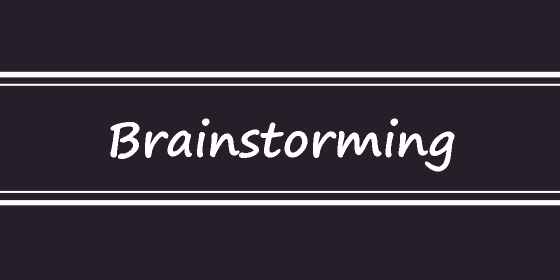Brainstorming

Brainstorming is a creative and collaborative technique used to generate a large number of ideas or solutions to a specific problem or challenge. It is a group activity where participants are encouraged to freely share their thoughts and suggestions without judgment or criticism. The goal of brainstorming is to foster a creative and open environment that stimulates diverse thinking and encourages the exploration of unconventional ideas.
Key characteristics of brainstorming include:
- Idea Generation: Participants are invited to generate as many ideas as possible, no matter how wild or impractical they may initially seem. Quantity is emphasized over quality during the brainstorming session.
- Non-Critical Environment: Brainstorming sessions are judgment-free zones, where all ideas are accepted and valued. Participants are encouraged to build on each other’s ideas and avoid negative feedback.
- Time Limit: Brainstorming sessions are usually time-boxed to encourage rapid idea generation and prevent overthinking.
- Diverse Participants: Having a diverse group of participants with different backgrounds and perspectives can enrich the brainstorming process and lead to more varied ideas.
- Encouragement of Wild Ideas: Outlandish or unconventional ideas are welcome, as they can often trigger new ways of thinking and lead to innovative solutions.
- No Evaluation: The focus of brainstorming is on generating ideas, not evaluating or critiquing them during the session. Evaluation comes in a separate phase after the brainstorming process.
Brainstorming can be conducted in various formats, such as in-person meetings, virtual sessions, or online platforms. During the session, a facilitator may guide the process, ensuring that all participants have an opportunity to contribute and that the rules of brainstorming are followed.
The brainstorming technique is widely used in various fields, including design, marketing, problem-solving, and innovation. It helps teams break away from conventional thinking and explore new possibilities, often leading to unexpected and creative solutions. Brainstorming is particularly effective when used in conjunction with other ideation techniques and processes, such as mind mapping and design thinking, to foster a rich and diverse pool of ideas.
After the brainstorming session, the collected ideas are typically evaluated, refined, and prioritized in a separate phase to determine which ones are most viable and relevant for further exploration and development.